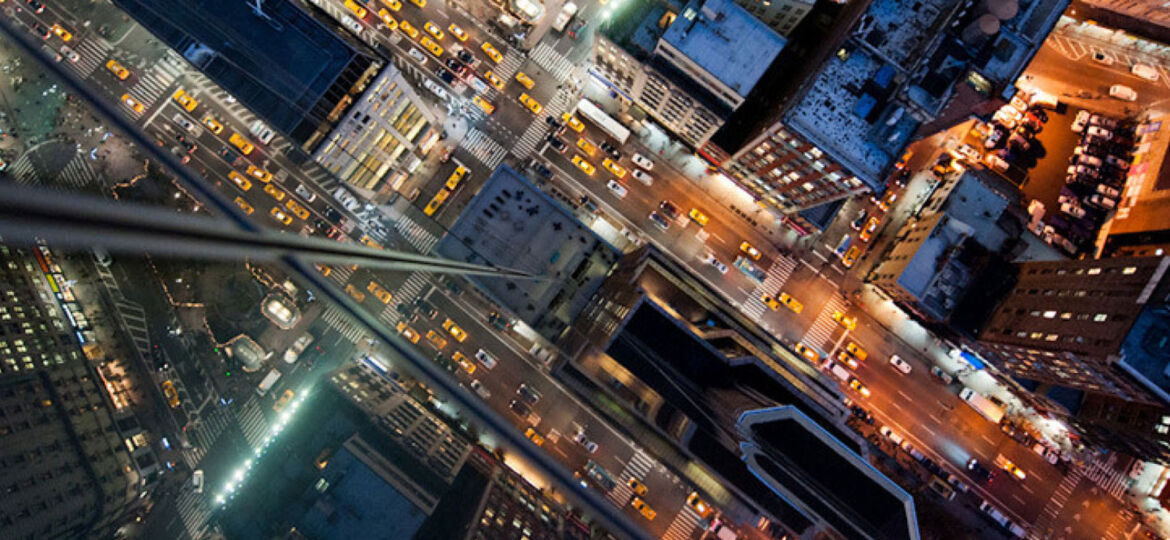
WHY THIS MATTERS IN BRIEF
Google Earth with TiVo capability was the pitch and security forces around the world are starting to snap the technology up.
The police have been using aerial surveillance systems for years now but there were practical limits to airborne surveillance. Helicopters were too expensive and the views from their cameras too narrow to capture everything happening in a big, busy city. But that is no longer the case and we are now seeing Governments, police and security forces around the world adopt more and more “Persistent Surveillance Systems”, such as the WAMI system that watched over the Rio 2016 Olympic Games, and this is just the beginning.
A Cessna airplane equipped with an ultra-wide-angle camera array has been providing Baltimore police with aerial images collected across 32 square miles — more than a third of the city — for hours at a time since January. Only the occasional encroachment of clouds has obscured the views as the plane’s 192-megapixel camera collected 10 terabytes of data each week as Baltimoreans drove to work, walked to church or relaxed outdoors.
The flights, which have been conducted without any public notice, amount to a major new development in the debate over privacy and security. Though the images are not crisp enough to show individual faces, researchers have shown that location data collected over time is remarkably distinct, potentially allowing for authorities to identify people and their daily movements.
“As technology permits it, we’re seeing systems that seek to watch everybody all the time,” said Jay Stanley of the ACLU’s Speech, Privacy, and Technology Project.
“This is a giant leap into a real Big Brother future.”
On Wednesday, Baltimore police spokesman T.J. Smith called the flights “effectively, a mobile citywide camera.” He said there had been 100 hours of flights in January and February and 200 hours during the summer.
“The only people who should be concerned in the City of Baltimore are criminals,” he said.
The project is the result of an unusual partnership in which private citizens in Texas — a hedge-fund trader and his wife — have hired an Ohio-based company, Persistent Surveillance Systems, to provide visual evidence of crimes in Baltimore.
Smith said there had been no city funding for the program, nor a decision on whether to continue past a few more weeks of “test and evaluation.” He said the surveillance had helped catch an alleged shooter of two elderly people in one incident, with 126 “outdoor murders” so far this year, but could not say how many arrests had been facilitated by the program. The flights happen at 8,000 feet. He said there has been no monitoring of protests.
Persistent Surveillance Systems has deployed its technology for years in foreign cities and in smaller-scale demonstrations in the United States, including in neighbourhoods around its headquarters in Dayton, Ohio. That city stopped amid privacy complaints and concerns about the cost of the service. Ross McNutt, president of Persistent Surveillance Systems, declined to say how much the flights over Baltimore have cost.
Similar technology has been used overseas in war zones by military officials. But the effort in Baltimore is the biggest and longest-running yet for a civilian police department, said McNutt. He said the funding has come from the anonymous donor, not the police department, but McNutt is hoping to get a city contract to continue the surveillance operation.
“We believe that we protect people’s privacy while providing a very, very effective tool to solve crimes that otherwise wouldn’t be solved,” McNutt said in an interview with The Washington Post.
Police do not get access to all of the images collected, but detectives have received more than 100 “investigation briefs,” which McNutt said have helped solve numerous crimes. He said that the flights have run for five to 10 hours a day in January and February, then again from June through August. About 12 analysts review the images in response to police queries.
To protect privacy, McNutt said that images are examined only in response to reports of crimes and will be deleted after 45 days if not needed for an investigation. In practice, he acknowledged that so many crimes get reported in Baltimore each day that it will be difficult to know which images to discard.
In some case, the company can track suspects in real-time with the goal of helping police arrest a suspect fleeing the scene of a crime. Because images are collected continuously for hours at a time, it’s also possible to see how victims, suspects and witnesses moved before or after the crime. Each person typically is the size of a single pixel on an image.
“It’s kind of new, but it’s also no different from having a police helicopter up there,” McNutt said. “But by the time a police helicopter gets to a call, the people are usually gone.”
The Supreme Court generally has given wide latitude to police using aerial surveillance as long as the photography captures images visible to the naked eye.
During the March 2015 riots that followed the death of Freddie Gray, a black man in police custody, the FBI conducted surveillance flights above Baltimore.
McNutt, who helped design a similar system for the skies above Fallujah, a battleground city in Iraq, once proposed several possible forms of aerial surveillance for Washington, D.C, suggesting that a single camera mounted atop the Washington Monument could deter crime all around the Mall. He also said regular flights over the most dangerous parts of Washington — combined with publicity about how much police could see — would make a significant dent in the number of burglaries, robberies and murders and that the cameras would spot as many as 50 crimes per six-hour flight providing police with a continuous stream of images.
We are just at the beginning of a new form of surveillance and yes, big brother is watching…
















